Comprehensive Guide to Walk-in Bird Aviaries for Sale
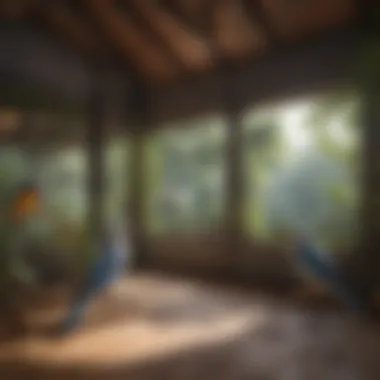
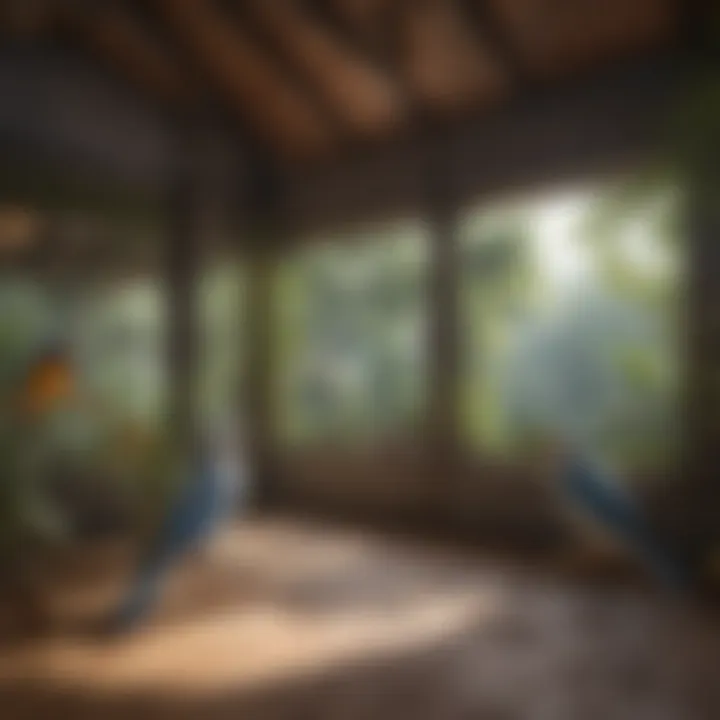
Intro
Birdkeeping is more than just a hobby. It is a passion that draws attention to the care and well-being of our feathered friends. Walk-in bird aviaries have become increasingly popular among bird lovers. They provide ample space for birds to fly, play, and exhibit natural behaviors. This guide intends to cover essential aspects of walk-in bird aviaries for sale, addressing their advantages, essential designs, and various considerations for prospective buyers.
Before delving into specifics, it is pertinent to acknowledge why such setups might be appealing. Walk-in aviaries significantly enhance a bird's living conditions. By providing outdoor space for social interaction and exploration, the aviaries contribute to the physical and mental health of birds. Whether for providing the necessary space for a single pet bird or for breeding purposes, a walk-in aviary could transform the ordinary environment into a vibrant habitat.
Furthermore, various manufacturer's options and pricing strategies exist in the market. Subsequently, we will offer invaluable insights into care, nutrition, and wellness to ensure that both new and seasoned enthusiasts can create enriching habitats.
Care Tips
Daily Care Routines
A comprehensive daily care routine is fundamental to maintaining a thriving bird environment. Specific tasks can include providing fresh water, replacing food, and monitoring conditions within the aviary to ensure birds have a healthy habitat. Owners should also enjoy interactions with their birds since this promotes a bond that is beneficial for both pets and owners.
Cage Setup and Maintenance
Setting up a walk-in aviary involves careful planning. Select sturdy materials that withstand various weather conditions, ensure safety, and allow for good ventilation. Every aviary should incorporate perches, shelter areas, and various substrate types. Periodic checks on materials for wear helps maintain safety for the birds inside.
Hygiene and Cleaning Practices
Maintaining hygiene is crucial. Regularly clean feeders, water containers, and substrate areas to prevent bacterial growth and infestations. It is effective to establish a cleaning schedule that fits daily routines. Additionally, keeping a detailed log of cleaning tasks will assist in maintaining high standards of cleanliness consistently.
Seasonal Care Adjustments
Each season can influence how one should care for an aviary. During winter months, providing warmth and shelter is critical. Summer, on the other hand, requires better ventilation to avoid overheating. Anticipating these seasonal highs and lows ensures that the aviary is not only a structure but a sustainable living environment.
Behavioral Insights
Understanding Bird Body Language
Birds communicate significantly through body language. Watching tails and beak moves can provide insights into their emotional states. For instance, fluffed feathers can indicate discomfort, while direct eye contact may show curiosity or tolerance. Understanding these signs fosters a peaceful environment.
Common Behavioral Issues and Solutions
Birds may experience various behavioral challenges, such as excessive screeching or feather plucking. Identifying triggers like loneliness or inadequate stimulation is mainly crucial. Employing positive reinforcement techniques can divert negative behaviors into social learning opportunities, setting a basis for constructive acts.
Positive Reinforcement Techniques
Using rewards encourages desirable behviors. Treats are an easy way to attract birds into participating in activities that correct the unwanted action. Owners can employ mini-games and playful interactions intertwined into relevant routines.
Social Interaction Needs
Birds are social creatures that thrive on interaction. Providing them opportunities to play, engage, and communicate with others can diminish fatigue. Owners should oversee balanced and healthy social interactions. Toys are an essential avenue for these connections, keeping boredom at bay.
Nutrition Guides
Essential Diet Components
Balanced nutrition is critical for avian health. Regular dietary needs can ki-nclude a blend of seeds, pellets, fresh fruits, and vegetables. Formulating a varied diet ensures that birds receive proper vitamins and minerals necessary for their metabolic functions.
Safe and Toxic Foods
Knowledge of what birds can consume is vital for their safety. Some farm products, such as avocados, and certain types of chocolate should be avoided completely. An easy-to-reference list frequently updated with local food news will help maintain food safety.
Supplements and Treats
Various treats can complement bird diets and contribute to enrichment. Nuts, seeds, and occasional leafy greens offer both delight and nutritional benefits. However, care should be taken to observe quantity for the good of the bird.
Feeding Strategies for Different Species
Each species has its strengths, and incorporating knowledge about each one is paramount in property managing aviaries. For example, Finches often prefer slightly higher fatty content compared to other bird types. Consultation with a veterinarian can enhance this knowloedge about diet options that correspond to species requirements.
Wellness and Health
Routine Health Checkups
Regular health check-ups through dependable avian veterinarian are necessary in preventative healthcare. Daily owner assessments for general behavior along with periodic rigorous health checks foster early illness detection.
Identifying Symptoms of Illness
Understand the clues that indicate an underlying sickness. Common signs include lethargy or changes in feathering. Owners must watch for variations in drinking or eating habits, these will enable early interventions.
Preventative Care and Vaccinations
Consulting a veterinary professional ensures curriculum-guided vaccination processes. Preventative methods save time and financial investment later, protecting the well-being of the entire flock.
Mental and Emotional Well-being
A nutritious diet goes hand in hand with mental stimulation. Regular interaction with the birds can cultivate emotional prosperity. Enabling social connectedness in both solitary and group settings will lead to a perfectly harmonious aviary space.
Enriching Activities
Toys and Playtime Ideas
Implementing mentally stimulating activities is great. Arrange different types of toys per species interest, rotating them offers vehicles for stress relief and exceptional fun for birds. Simple DIY options exist to create fun experiences that champions their engagement through constructive beak poke.
Training and Tricks
Animal scholars encourage integrated techniques for training various species. Positive touches accompanied by rewards go a long way to seed basic shall we say lure commands. Participative methods strengthen bird-owner interactions.
Outdoor Activities and Interaction
Weather permitting, outdoor from the aviary should not be neglected. Regular elements like sunlight addition and fresh air promotes all-around vigour; enable careful monitoring to detangle from potential harm. Bird walks/session become valuable to enrichment not easily gone unnoticed!
DIY Projects for Mental Stimulation
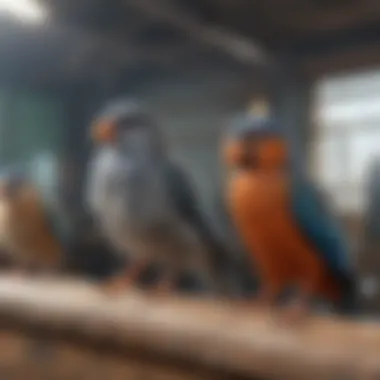
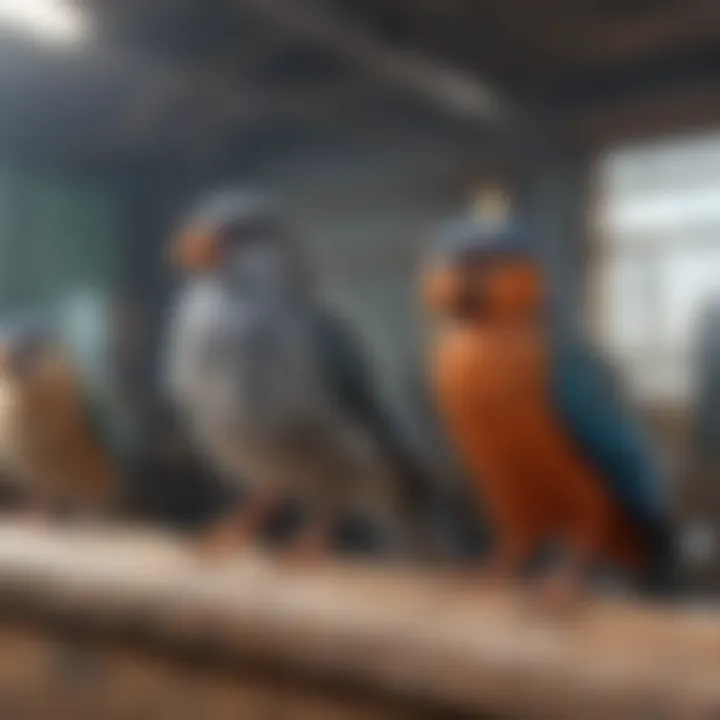
Consolidating existing bird-safe materials into inspiring lockboxes or new assort lengths can be a rewarding touch during free moments. Encourage turn-taking playing processes supports new skills while caring fosters creativity. More information can always be tailored and obtained from resources like reddit.com and facebook.com.
In summary, this guide comprises all critical features and perspectives that will effectively assist birdfanciers eager to pursue knowledge about walk-in bird aviaries. Improved living spaces combined with thoughtful routines stay essential for perfect birds' engagement with their dailysc.nv’s exciting variance.
Intro to Walk-in Bird Aviaries
Walk-in bird aviaries represent an opportunity for avian enthusiasts to provide a space that mimics a bird's natural environment, allowing for both physical exercise and mental stimulation. Unlike traditional cages, walk-in aviaries offer larger, more engaging areas where birds can fly and interact with their surroundings.
It is crucial to understand that walk-in aviaries are not merely extravagant enclosures. They serve a significant purpose in ensuring the well-being of pet birds by fostering their health and emotional needs. Given the unique demands of different bird species, potential buyers must delve deep into both the physical layout and the ergonomic design of the aviaries.
When examining walk-in aviaries, there are several key elements to consider. A well-designed aviary will encourage natural behaviors, provide adequate space for flying, and incorporate shelter areas where birds can feel secure. The investment in a walk-in aviary should also reflect a commitment to maximizing the birds' quality of life.
Several important factors emerge when selecting a walk-in aviary. Buyers should reflect on their available space, the kind of birds they wish to house, and local climate conditions, as these elements greatly influence both the types of aviaries and the associated care requirements. Moreover, understanding costs, materials, and maintenace practices will lead to a more satisfying experience short-term and long-term.
Ultimately, walk-in bird aviaries are a sanctuary for birds and a source of joy for their owners. The advantages they offer, from health improvements to socialization opportunities, make them worthwhile for any bird lover. As we journey through this guide, we will detail these attributes further, ensuring that buyers are well-equipped to make informed decisions.
Benefits of Walk-in Aviaries
Walk-in aviaries provide many advantages for the well-being of birds and their owners. These aviaries not only offer a space where birds can thrive, but also enrich the lives of the birds as well as their human caretakers. In this section, we will explore three specific benefits: enhanced space for birds, improved socialization opportunities, and natural behavioral expressions. Each of these elements addresses a unique aspect of bird care that can significantly impact the overall quality of life for avian pets.
Enhanced Space for Birds
The most noticeable advantage of walk-in aviaries is the increased space they offer. Unlike traditional cages, walk-in aviaries allow birds to move freely in a larger area. This space is crucial for their physical health, as it enables them to exercise and explore. Birds that have enough room can fly and stretch their wings, which contributes to their overall fitness.
Moreover, ample space reduces territorial behavior. In aviaries, multiple birds are less likely to engage in fighting. This makes for a more harmonious environment, especially if you house different species together. Potential owners should consider how the size of an aviary relates to the number of birds they intend to keep. Think about not just the floor space but also the vertical height.
Improved Socialization Opportunities
Social creatures need interaction, both with their fellow birds and their human companions. Walk-in aviaries facilitate interactions, creating a communal environment. Birds can engage with one another, mimic calls, and participate in natural social behavior. This mirrors their behavior in the wild, which is beneficial for their emotional well-being.
Different species tend to socialize differently. For example, a flock of finches may entertain themselves by chirping while parrots may engage in more interaction with humans. Thus, owners can enjoy a dynamic atmosphere where there’s always something interesting happening.
Natural Behavioral Expressions
Natural behavioral expressions are vital to bird health. However, in confined spaces, birds may become stressed. Walk-in aviaries allow them to express their instincts, such as foraging, climbing, and nesting. An aviary designed with branches, ropes, and other perches provides essential structures for climbing and playing. This mimics their natural environment and allows for more genuine behavior.
Owners can also introduce safe toys and materials that simulate natural conditions, promoting intellectual stimulation. Implementing a variety of features provides birds with choices and variety, further reducing stress. It is vital that the environment encourages interaction not just with surroundings but also other birds, virtually imitating their natural settings.
"Creating an adequate environment inside a walk-in aviary potentially brings out the best in your birds, showcasing their health and vitality like never before."
Key Considerations Before Purchase
Before acquiring a walk-in bird aviary, prospective buyers should truly assess a number of factors to ensure they make a suitable decision. Buying an aviary involves much more than merely choosing a design or color; it requires a thorough consideration of how the aviary will fit into both your environment and lifestyle. Key aspects such as space availability, budget constraints, desired bird species, and climate considerations play essential roles in ensuring a compatible and thriving environment for your feathered companions. Missing these elements could lead to poor living conditions for your birds or even the unnecessary loss of investment.
Space Availability
One of the foremost considerations is the actual space you can dedicate to the aviary. Measure the area where you plan to set up the aviary meticulously. A spacious aviary provides freedom for birds to move around, stay active, and exhibit natural behaviors. Before purchasing, consider using space efficiently and ensuring compliance with local laws and regulations regarding animal enclosures.
Common Space Factors to Address:
- Overall dimensions: Length, width, and height must fit within your premises.
- Accessibility: Will the aviary be easy to enter and maintain?
- Surroundings: Is there enough distance from obstacles like walls or fences that could impede airflow or light?
Taking these factors into account leads to smarter purchases and promotes an enjoyable experience for both you agile avians and yourself.
Budget Constraints
Financial planning is crucial when investing in a walk-in aviary. Understand your budget from the start to avoid disappointments. Establishing a clear financial framework will help narrow down your options effectively, considering that aviaries can range widely in price depending on features, size, and materials.
Budget GPT considerations include:
- Base cost of aviary: What is the manufacturer's recommended price?
- Installation fees: Will you require professional installation?
- Maintenance costs: How much will be spent on cleaning supplies, replacement materials, or additional features over time?
It is recommended to factor for potential expenses that may arise after purchase to avoid a strained wallet down the line.
Desired Bird Species
Different bird species exhibit varying behaviors, social needs, and environmental preferences. Knowing what kind of birds you want to house will influence the intended setup of the aviary. Some species thrive in flight and require ample wing space, while others might appreciate more structures to perch and settle on.
Key Points to Examine:
- Type and size of birds: Ensure the aviary can accommodate the growth and attraction of the specific types of birds.
- Social compatibility: Can the species safely coexist? Consider if they have a natural hierarchy or territorial tendencies.
Purchasing the right-sized aviary is crucial to promote a joyful and content lifestyle for your birds.
Climate Considerations
The climate in your location must also shape your aviary choice. Birds require suitable temperatures and safe conditions both indoors and outdoors. Some materials and designs may adapt better to specific climates, while others might succumb to environmental damage.
Aspects of climate to consider include:
- Temperature control: Will the aviary require heating or cooling provisions?
- Rain and moisture tolerances: What materials are used? Analyze if they are resistant to excessive moisture and weather conditions.
- Reinforcement against prevalent wind conditions: The aviary should be positioned and constructed to minimize disruption from wind.
The goal is to ensure comfort and safety for the birds throughout the year.
Types of Walk-in Bird Aviaries
Understanding the various types of walk-in bird aviaries is crucial for bird enthusiasts. Different designs cater to unique needs. Choosing the right aviary can influence bird well-being, interaction, and the overall experience for both the owner and their avian companions.
Freestanding Aviaries
Freestanding aviaries are independent structures. They come in different sizes and styles. These aviaries offer several benefits including flexibility in placement. With a freestanding aviary, owners can position it based on sunlight, shade, or aesthetic preferences. Ease of access is another advantage. It's straightforward for bird owners to enter and spend time with the birds.
In addition, these aviaries can be moved if necessary when a layout changes. They also can frequently accommodate larger bird species that need more space to fly. Freestanding aviaries provide safety with robust material options, keeping birds secure. Overall, they are suitable for serious bird owners who prioritize space.
Wall-mounted Options
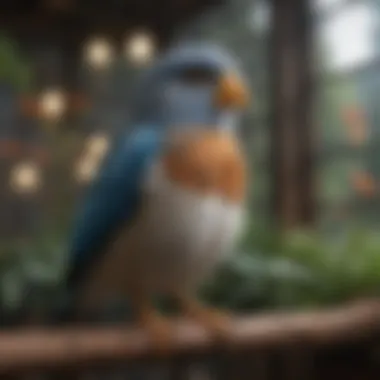
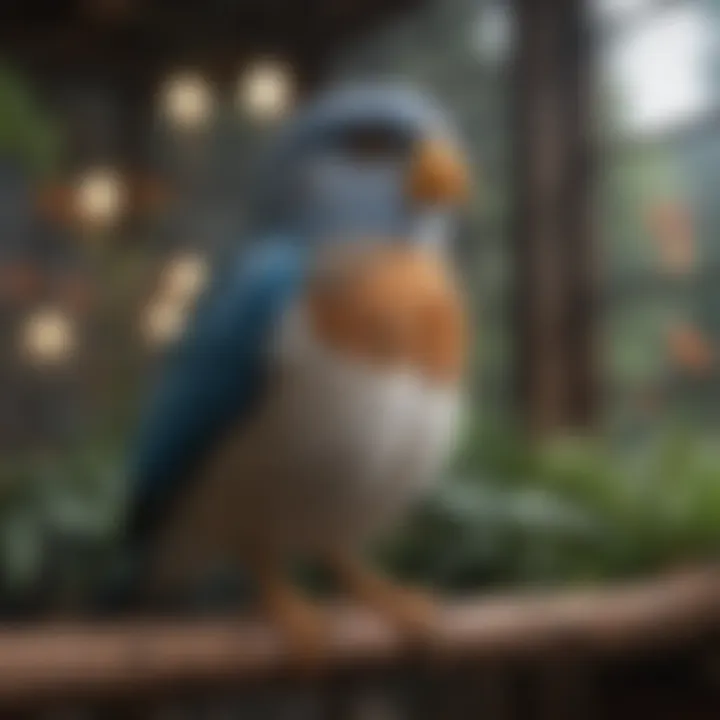
Wall-mounted aviaries attach directly to a wall. They take advantage of limited space while providing a home for birds. Ideal in smaller yards or inside homes, they streamline space usage without sacrificing bird health. These aviaries maximize vertical space. Wall-mounted aviaries are perfect for those who don’t have a large area but still want pet birds.
Maintenance can be a bit tricky. The cleaning may require specialized tools or approaches suggested by manufacturers. That said, these aviaries still offer ideal settings for many bird species. Wall-mounted options are a compact and resourceful way to enhance living environments with avian life.
Outdoor vs.
Indoor Aviaries Deciding between outdoor and indoor aviaries comes down to several factors. Outdoor models are designed to withstand weather conditions. They allow for fresh air circulation and potentially larger spaces, giving birds a more natural feel. In contrast, indoor aviaries offer controlled environments, keep birds away from predators, and protect them during harsh conditions.
Setting up an outdoor aviary often involves careful planning. It is important to consider local foliage and potential dangers like sunny areas. Selecting appropriate bird species also plays a crucial role in decision-making.
Apart from using materials with UV resistance for durability, both types can enrich bird lives if maintained well. Owners should ensure proper breeziness, protection from external threats, and adequate space for flying. Choosing the right aviary type grows the bond between a bird and its owner while prioritizing health.
Materials Used in Aviary Construction
When selecting a walk-in bird aviary, the materials used in its construction may greatly influence its durability and overall effectiveness as a space for your feathered friends. This section explores the major materials utilized, their respective pros and cons, and why they matter for the well-being of the birds.
Metal Framework
Metal frames are a popular choice in aviary construction due to their strength and resistance to various environmental influences. Aluminum, galvanized steel, and other high-quality metals create structures that can withstand inclement weather and potential wear over time. One critical consideration when selecting metal frameworks is corrosion resistance. An aviary equipped with rust-resistant metal will maintain its integrity much longer, reducing maintenance and ensuring the safety of the birds inside. Many pet bird owners prefer aviaries made with these metals, providing both security and longevity.
Benefits of Metal Frameworks:
- Durability against weather extremes.
- Minimal maintenance needs.
- Enhanced security from possible predators.
Overall, metal frameworks offer superior performance but may come at a higher price tag.
Wooden Components
Wood has its own set of benefits and aesthetic qualities that appeal to many bird owners. Aviaries featuring wooden components can provide a warm environment. Additionally, wood is a natural insulator, keeping the aviary warmer in cold temperatures and cooler when needed. It is essential to choose untreated or naturally resistant wood types, such as cedar or redwood, to reduce risks associated with harmful treatments.
While wooden aviaries may require periodic maintenance to protect them from the elements—such as sealing them against moisture—they often offer strong aesthetic appeal. The proper care ensures they remain a safe and attractive option.
Pros of Wooden Components:
- Natural beauty and aesthetic options.
- Insulation properties.
- Ability to blend with outdoor surroundings.
Understand, however, that wood structures can be cumbersome in terms of long-term maintenance.
Acrylic and Wire Types
Aviaries often use different types and grades of acrylic and wire to complement the overall structure. Wire mesh offers excellent ventilation and visibility while also allowing birds to interact with their surroundings safely. That said, wire material must be robust enough to prevent potential breakouts. Stainless steel wire is particularly prized for its strength, while coated options may offer more comfort for the birds.
Acrylic sheets provide visibility while protecting from the elements. They can also reduce drafts, creating a more comfortable environment for the inhabitants. However, proper management is essential. Material differences can impact durability and bird safety significantly.
Key Considerations for Acrylic and Wire Types:
- Ensure that wire prevents escape and is strong enough to resist damage.
- Choose acrylic that offers UV protection and scratch resistance.
- Regular checks to ensure the integrity of all materials.
In summary, materials used in aviary construction have tangible effects on the quality of life for birds, and familiarizing yourself with each type can guide critical purchasing decisions.
Size and Spatial Considerations
Size and spatial considerations are crucial when it comes to choosing a walk-in bird aviary. The dimensions of the aviary directly impact the birds' well-being, behavior, and overall comfort. A well-sized habitat not only accommodates various activities but also enriches their natural behaviors. In this section, we will discuss how to determine optimal size, assess height vs. width measurements, and evaluate access points and layout.
Determining Optimal Size
Choosing the right size for a walk-in aviary requires a thoughtful approach. The optimal size depends on the species of birds and their social behaviors. Larger birds like macaws or cockatoos require more space to extend their wings and move freely. Smaller birds, such as finches, can thrive in a somewhat compact area but still benefit from adequate space to fly.
The general guideline is to allot at least 10 square feet of floor space per bird. Keep in mind that this is an approximation, as some species may require more based on their unique needs and companionship preferences. Açvastatingly, the absence of proper space can lead to various behavioral issues including aggressive behaviors, stress, and decreased health.
Height vs.
Width Measurements
Another important aspect of sizing an aviary involves understanding the height and width requirements. Birds typically fly vertically as well as horizontally. Therefore, a figure-eight design or multi-layered structure can be beneficial in maximizing space use. The height must allow birds to take off and land comfortably without any hindrances. A minimum height of 6 feet allows for adequate flight space for most small to medium birds.
Conversely, width is equally important. Aviaries that are excessively narrow may limit flight paths, stressing the birds when they cannot move freely. Consequently, maintaining a balanced ratio of height and width is fundamental to create an inviting atmosphere for its residents.
Access Points and Layout
The access points of an aviary significantly influence its layout and usability. Builders should incorporate multiple entrance points for ease of access and maintain better monitoring of bird interactions within the habitat. Each access point should lock securely, preventing potential escapes or unwanted access from pests.
The layout design should consider bird movement and decors, like branches or perches, to replicate a more engaging natural setup. Strategic placement of nesting areas and feeding stations can avoid any conflicts and ensure a calm environment for wings to flutter.
In summary, taking into consideration the size and space is vital for a successful aviary setup. Focusing on optimal dimensions, handling height and width effectively, and creating a user-friendly layout can significantly elevate the comfort levels for both the birds and the owner.
Selecting the proper size is not merely about accommodating birds, but enhancing their happiness and lifestyle.
Essential Features of Walk-in Aviaries
When considering a walk-in aviary, understanding its essential features is critical. These features ensure the comfort and safety of birds. They have both practical and emotional significance. A well-structured aviary not only enhances the lives of the birds but also offers peace of mind for their caretakers.
Ventilation Systems
Corret ventilation within the aviary is vital for maintaining a healthy environment. Birds, like any other living beings, require clean air to thrive. Poor ventilation can lead to a buildup of harmful moisture, pathogens, or ammonia. This situation may cause respiratory issues or other health problems for the birds.
Effective ventilation systems can be designed to switch fresh air in while drawing contaminated air out. Many aviary designs incorporate wire mesh or screens which allow for air flow. Additionally, strategic positioning nearby doors or windows can facilitate this process, but still prevent any escape risks.
Some manufacturers also offer ventilated panels. These pieces allow for adjustable airflow, adapting based on weather conditions. Selecting a model that promotes airflow can boost the conditions of both birds and the aviary.
Safety and Security Measures
Safety should never be understated in any walk-in aviary. Various animals or other hazards can pose a threat, whether from adjacent wildlife or even domestic pets. Therefore, a solid structure and careful design are non-negotiable.
Key safety features include:


- Lockable Doors: This ensures that access is only granted to responsible pet owners.
- Durable Materials: Selecting materials like powder-coated steel that withstand wear and resist tampering is a wise choice.
- Rounded Edges and Non-toxic Coatings: These considerations create a safer area for the birds, eliminating chances of injury.
Before purchase, evaluate the warranty and understand which safety measures the manufacturer emphasizes. This careful step helps ensure record results for peace of mind and protects your pet.
Easy Cleaning Solutions
Cleanliness is crucial for instances where birds are indoors or even in outdoor environments. Walk-in aviaries can easily accumulate waste and debris. Features assisting in cleaning can save significant time and managekeeping the aviary hygienic.
Consider aviaries constructed with removable trays. These trays can simplify waste collection, that allows quick maintenance without disruption. Painted or sealed surfaces can also provide ease in cleaning, making daily tasks smoother. Regular cleaning prevents the planning for various illnesses that can afflict our feathered companions.
It's beneficial to look for materials resistant to stains or corrosion as they directly aid in preserving a hygienic aviary.
Important to remember: Neglecting cleaning routines not only impacts the aesthetic appeal but can also play a role in the overall health of birds.
As discussed above, understanding ventilations, safety precautions, and cleaning efficiency challenges can enhance the experience in owning an aviary. Start with sound planning before deciding on the features that suit you and your birds.
Market Overview of Available Options
The selection of walk-in bird aviaries on the market is vast and varied. Understanding this landscape is essential for anyone considering a purchase. This section aims to shed light on the different avenues available to prospective aviary owners. The elements at play refer to access through local retailers and online suppliers, custom-built structures versus pre-fabricated ones, and price variations across different options.
Local Retailers vs.
Online Suppliers
When seeking walk-in bird aviaries, buyers face the decision of shopping at local retailers or turning to online suppliers. Both have their pros and cons.
Shopping locally allows for a hands-on experience. Customers can see the aviary's construction, gauge the size, and feel material quality before committing to a purchase. Furthermore, engaging with sales staff can provide valuable insights on placing the aviary in specific environments such as indoor or outdoor settings.
However, local options may lead to limited availability. Not all creations are on display, and it might not represent the range a customer wishes to explore.
On the other hand, online suppliers wide selection is generally much greater. They often display various designs and brands to meet diverse needs. One can compare features and prices easily. Online shopping also conveniences busy customers who can make purchases right from home. But, a prospective buyer should consider shipping policies and potential delays. Reviews and product specifications become crucial, because one cannot physically inspect the aviaries.
In summary, the decision between local retailers and online suppliers should be a ponderous balance of convenience and tactile experience.
Custom-built vs.
Pre-fabricated
Buyers face another choice when defining their aviary: custom-built models or pre-fabricated options. Custom-built aviaries offer remarkable flexibility in design and size, allowing owners to create unique living spaces tailored specifically for their birds. This option particularly benefits enthusiasts with specific vision for their setups, or unique space constraints to consider.
Custom models often include specialized features such as heating systems or unique perching options. Clients commonly work with professional builders who may use higher-quality materials or even more durable materials suited for both aesthetic appeal and the performance of the aviary itself.
Conversely, pre-fabricated aviaries provide cost efficiencies and convenience. These models often arrive at homes assembled or can be put together quickly with provided instructions. Due to these efficiencies, they are a good option for those who need to stay within certain budget constraints or simply lack the time or skills for assembly. Models vary widely across manufacturers and may also include types like freestanding or wall-mounted options.
Ultimately, the choice of custom versus pre-fabricated revolves around personal preferences and practical considerations.
Comparative Pricing Analysis
The landscape of pricing for walk-in bird aviaries is broad and complicated. Cost determinants often relate to size, materials, and the complexity of design. Generally, pre-fabricated aviaries fall into a lower price range. Basic sizes, for instance, might start around $200, while larger or more elaborate designs could climb to thousands in retail.
Custom-built options, priced significantly higher, can oftentimes represent good value considering long-term durability and personalized functionality. Depending on choices made regarding features and materials, costs typically range from $1,000 to several thousand dollars.
It is essential for potential owners to not only look at the upfront costs. Maintenance expenses, costs of accessories, and any modifications should be factored into the overall budgeting process.
Maintaining a Walk-in Aviary
Maintaining a walk-in aviary is essential for the well-being of both birds and owners. An aviary provides a natural habitat for birds, and to ensure they thrive, consistent care is necessary. Understanding daily routines, waste management, and health check protocols establishes a framework for effective maintenance and enhancing the birds' quality of life. Proper maintenance helps prevent potential health issues, promotes healthy behaviors, and maintains a cleaner space for humans and birds alike.
Daily Care Routines
Daily care routines form the foundation of successful aviary maintenance. They encompass various tasks that ensure your birds remain healthy and their environment is comfortable. Here are essential components of daily routines:
- Feeding: Provide a balanced diet specific to your bird species. Fresh fruits, vegetables, and seeds should be a part of the diet.
- Watering: Ensure clean, fresh water is available at all times. This is crucial for hydration and overall health. Change water everyday.
- Observation: Spend time observing the birds. Look for any signs of distress or disease. Early intervention can be vital.
- Cleaning Perches and Toys: Remove droppings from perches and clean toys regularly. This reduces the build-up of waste and encourages healthier environments.
Consistent routines create stability. Birds can become anxious or stressed if their environment or schedules are altered significantly.
Handling Waste Management
Waste management requires attention to detail in a walk-in aviary. Proper handling prevents unpleasant odors and disease spread among birds. Here are key aspects of waste management:
- Daily Cleaning: Remove droppings, leftover food, and other debris daily. This task may seem tedious, but bacteria can grow rapidly in waste matters.
- Sanitation: Use explcul focused cleaning products that are safe for birds. Regularly disinfect perches, feeders, and nesting areas to maintain hygiene.
- Litter Systems: Consider using a litter system designed for aviaries. They can simplify clean-up processes and foster better waste management practices.
- Composting: If composting is feasible, some bird waste can be composted. However, do not compost contaminated materials. Only use natural materials from birds to ensure safety.
An effective waste management system leads to a more pleasant environment for both birds and their caretakers. It is one of the most important guarantees when keeping walk-in aviaries.
Health Check Protocols
Regular health checks are a significant pastime in aviary maintenance. Bird owners should be proactive with their birds' health. Failing to catch illnesses early can cause larger issues
- Physical Examination: On a regular basis, examine each bird. Check for weight loss, feather plucking, or swollen body parts. Early detection matters.
- Behavior Observation: Any changes in behavior can indicate health issues. Be wary of lethargy, changes in appetite, or unusual vocalization patterns.
- Schedule Vet Visits: Keep in touch with an avian vet. Routine check-ups are necessary to detect signs of illness that are not easily visible. Vaccinations and treatments should also be up to date.
- Isolation of Sick Birds: If a bird shows signs of illness, isolate it immediately. This limits the risk of illness spreading to others.
Emphasizing health checks enables bird owners to assure the longevity and well-being of their pets. This protocol not only promotes individual bird health but is also vital for the entire aviary population.
“Regular attention to maintenance can be the difference between a thriving aviary and a struggling one.”
In summary, maintaining a walk-in aviary demands commitment and thorough practices. Daily routines, careful waste management, and regular health checks form the core strategies for care. Without careful considerations in these areas, the problems of maintaining bird habitats can compound. Aspiring and existing aviary owners must adopt these practices for a healthy, vibrant bird community.
Closure: Is a Walk-in Aviary Right for You?
Deciding whether to invest in a walk-in aviary requires careful thought. Various factors can influence this decision. Are you an aspiring bird parent or a seasoned bird owner? This article discussed several aspects of walk-in bird aviaries. Knowing your specific needs and circumstances will guide you to the right decision.
Understanding your space and environment is crucial. You must assess if you have enough outdoor or indoor space. Birds need room to fly and socialize. Make sure the aviary size fits your living area and the needs of the chosen bird species. If space constraints exist, you might favor smaller options without compromising bird welfare.
Budget considerations should not be overlooked. Evaluate the total investment. Include costs for both the aviary and the maintenance. Prices can widely differ based on materials and customization. Make sure not to default to the lowest bid, as this might compromise quality and safety.
The choice of bird species significantly dictates the aviary design. Not all species thrive in the same environment. For example, larger birds like macaws will require more space compared to smaller finches. Choosing an option compatible with your aviculture goals is essential.
Climate factors are also integral for the well-being of your birds. Certain birds may not tolerate extreme temperature shifts. Think about the climate in which you live, as well as the placement of the aviary. An open approach can appeal to budgies, but rain or harsh sun exposure will not do any good.
In summary, knowing both your needs and the requirements of your birds will ultimately determine whether a walk-in aviary is suitable for you.
Overall, a walk-in aviary enhances the quality of life for birds. Still, it adds responsibilities for owners. Reflect on specific factors. By understanding the benefits along with challenges, you can make an informed choice.















